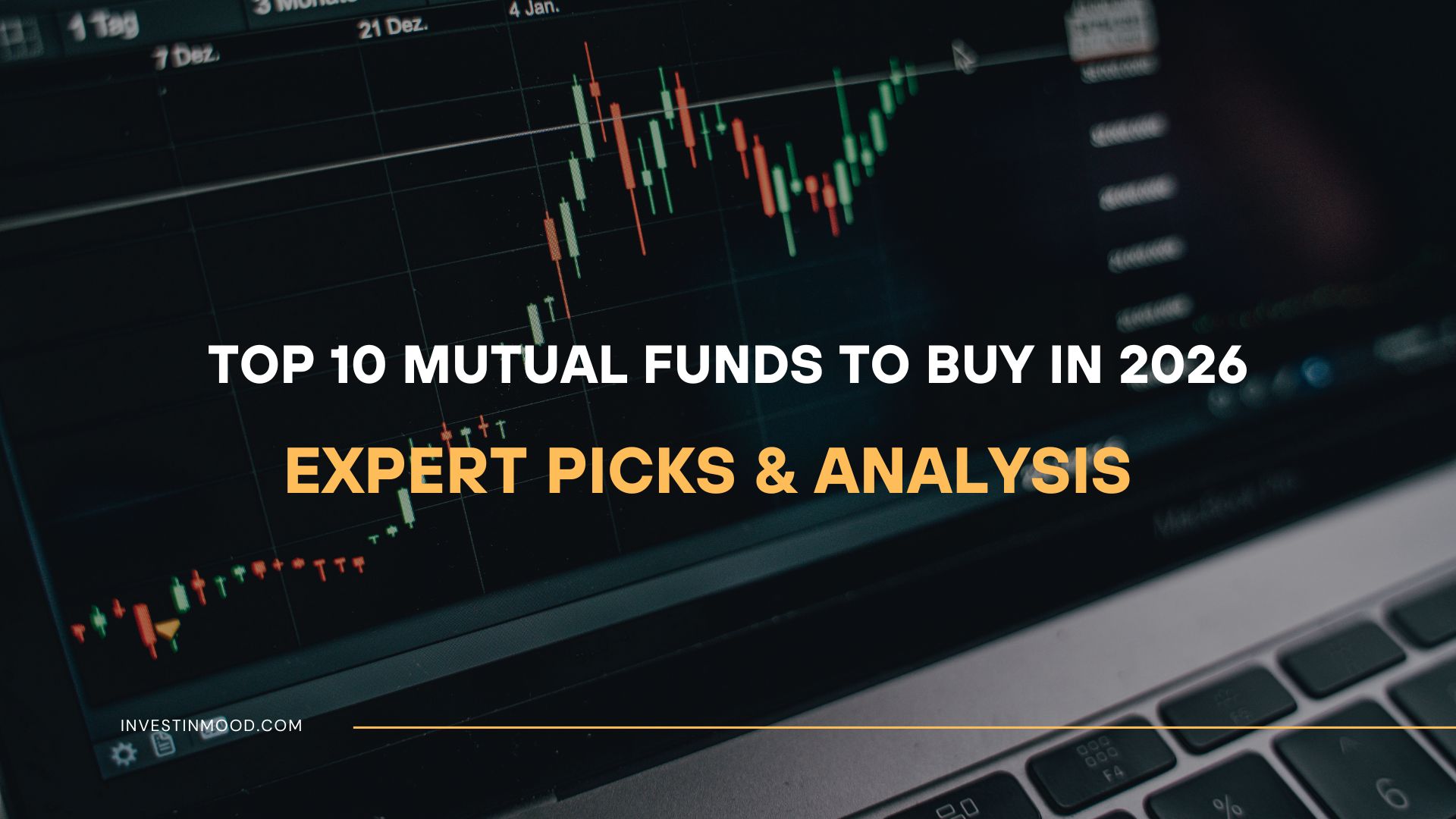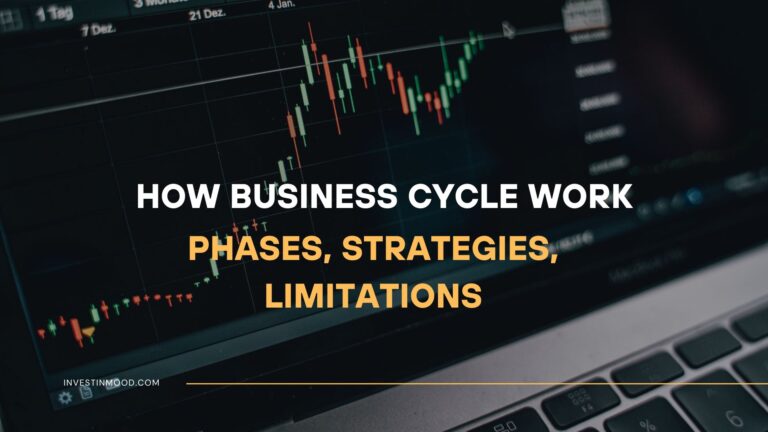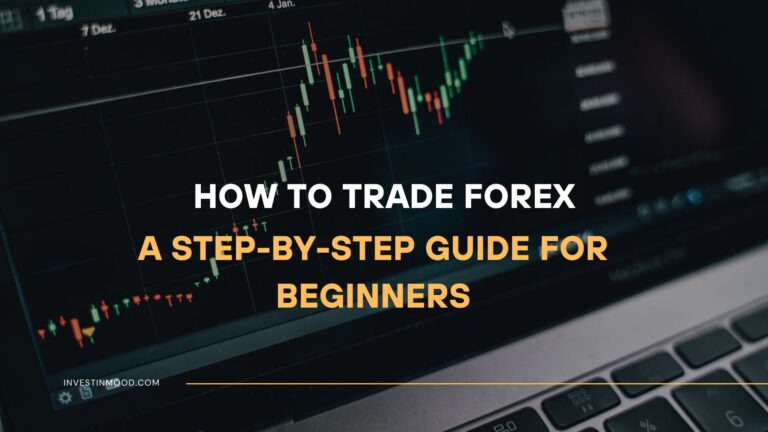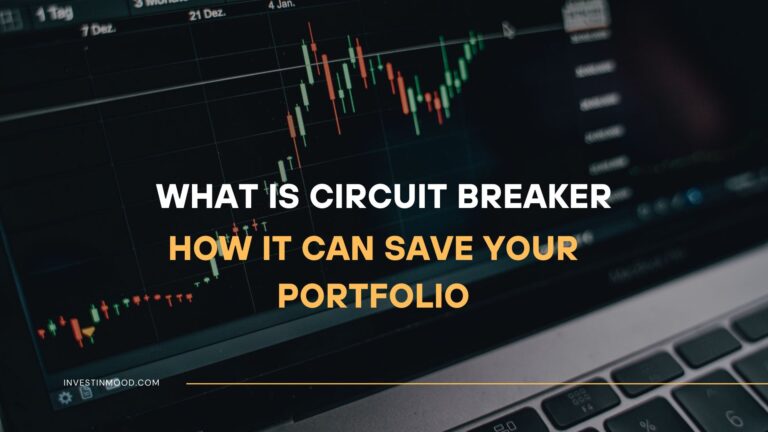
Top 10 Mutual Funds to Buy in 2026 Expert Picks & Analysis
Taking control of your financial future starts with smart, diversified investments. This guide cuts through the thousands of options to highlight the best mutual funds available for 2026. We help you find the perfect fit for your goals, whether you’re a new investor in the US, a seasoned saver in the UK, or a Canadian building a retirement portfolio, to build long-term wealth and achieve financial freedom.
What are Mutual Funds
A mutual fund is a professionally managed investment vehicle that pools money from many investors to purchase a diversified portfolio of stocks, bonds, or other securities. Think of it as a financial basket managed by experts; when you buy a share of a mutual fund, you own a small piece of every stock or bond inside that basket. This provides instant diversification, reducing your risk compared to buying individual stocks, and makes professional money management accessible to investors with even small amounts of capital.
Key Takeaways
Goal-Based Fund Selection
| Your Primary Goal | Best Fund Type | Key Feature to Look For |
|---|---|---|
| Wealth Accumulation (Long-Term) | U.S. Total Stock Market Index Fund | Broad diversification, very low expense ratio |
| Retirement Income | Balanced Fund (60% Stocks/40% Bonds) | Automatic asset allocation, focus on capital preservation |
| Aggressive Growth | Technology or Small-Cap Growth Fund | High growth potential, higher volatility |
| International Exposure | Global or International Index Fund | Diversification outside your home country |
| Capital Preservation | Short-Term Bond Fund | Low volatility, stable principal, income generation |
For investors in the UK, many of these US-domiciled funds are available through major platforms like Hargreaves Lansdown or interactive investor. UK-specific investors should also consider excellent local options like the Vanguard FTSE Global All Cap Index Fund. US users can easily access these funds through Vanguard, Fidelity, or Charles Schwab.
Top 10 Mutual Fund Picks of 2026
We’ve analyzed performance, costs, management strategy, and long-term track records to bring you unbiased, detailed reviews. Here are our top 10 picks for 2026, broken down by their strengths, ideal user, and key features.
1. Fidelity ZERO Total Market Index Fund (FZROX)
Overall Score: 5/5
Best For: Cost-conscious investors seeking maximum US market exposure.
Pricing: 0.00% expense ratio (Zero Fee)
The FZROX is a revolutionary fund from Fidelity that tracks a proprietary Fidelity US Total Investable Market Index. Its primary philosophy is to provide investors with broad, diversified exposure to the entire U.S. stock market at the absolute lowest cost possible—zero. This passive investment approach eliminates the burden of fees, allowing investors to keep 100% of the fund’s returns before taxes. It’s a core building block for any long-term portfolio.
Key Features:
- Zero expense ratio and no investment minimum.
- Exposure to over 2,500 U.S. stocks.
- Passively managed, tracking a broad market index.
- Ideal for a “set-and-forget” investment strategy.
- The Zero Fee Advantage The 0.00% expense ratio is a massive long-term advantage, compounding in your favor over decades.
- Maximum Diversification Instantly diversifies your portfolio across large, mid, and small-cap US companies.
- No Investment Minimum Accessible to investors of all sizes.
- Fidelity-Exclusive You must hold this fund in a Fidelity brokerage account; it’s not transferable to other brokerages.
- Proprietary Index It doesn’t track a widely-known index like the Wilshire 5000, though its performance is nearly identical.
Why We Picked It: We chose FZROX for the #1 spot because it fundamentally changes the cost equation for investors. In a world where fees are one of the few guaranteed drags on performance, a zero-cost, broadly diversified fund is an unparalleled starting point for building wealth.
2. Vanguard Total Stock Market Index Fund (VTSAX)
Overall Score: 5/5
Best For: The foundational “core” of a long-term portfolio.
Pricing: 0.04% expense ratio, $3,000 minimum ($1,000 for target-date funds)
VTSAX is the original total market fund and the gold standard for US equity exposure. It aims to track the performance of the CRSP US Total Market Index, representing nearly 100% of the investable U.S. stock market. It’s the definition of a “set-it-and-forget-it” fund, allowing you to own the entire market and benefit from its historical growth. Its low cost and immense diversification make it a favorite of legendary investors like Warren Buffett and John Bogle.
Key Features:
- Extremely low 0.04% expense ratio.
- Diversification across over 3,700 stocks.
- The original and most widely held total market fund.
- Strong, long-term performance track record.
- Proven Track Record The original total market index fund with a long history of reliable performance.
- Portability Can be held at any brokerage, unlike FZROX.
- Ultra-Low Cost While not zero, 0.04% is still exceptionally low and industry-leading.
- Higher Minimum The $3,000 initial investment can be a barrier for new investors.
- Slightly Higher Fee Marginally more expensive than FZROX.
Why We Picked It: VTSAX is the benchmark against which all other US stock funds are measured. Its reputation, portability, and rock-bottom cost make it an essential holding for any serious long-term investor.
3. Vanguard Total International Stock Index Fund (VTIAX)
Overall Score: 4.8/5
Best For: Investors seeking diversified exposure to markets outside the United States.
Pricing: 0.11% expense ratio, $3,000 minimum
VTIAX provides comprehensive exposure to stocks from companies located in developed and emerging markets outside the United States. It tracks the S&P Global ex-U.S. BMI Index, encompassing more than 7,500 stocks from countries like Japan, the UK, Canada, and China. This fund is an essential component for a globally diversified portfolio, helping to mitigate the risk of being overly concentrated in a single country’s economy. Its low cost ensures that you efficiently capture the long-term growth potential of international markets.
Key Features:
- Diversification across more than 7,500 international stocks.
- Includes both developed and emerging markets.
- Low 0.11% expense ratio for broad international exposure.
- Hedges against the performance of the U.S. dollar.
- True Global Diversification Significantly reduces country-specific risk by investing in thousands of non-U.S. companies.
- Includes Emerging Markets Offers growth potential from faster-growing economies in addition to established ones.
- Vanguard’s Low-Cost Advantage The expense ratio is very competitive for an international fund of this scope.
- Currency Risk Returns for U.S. investors can be negatively impacted by a strong U.S. dollar.
- Periodic Underperformance International markets can underperform the U.S. market for long periods, testing investor patience.
Why We Picked It: To avoid having all your eggs in one economic basket, international diversification is crucial. VTIAX provides this in a single, low-cost package, covering both developed and emerging markets.
4. Fidelity Contrafund (FCNTX)
Overall Score: 4.5/5
Best For: Investors who believe in the value of superstar active management for a portion of their portfolio.
Pricing: 0.39% expense ratio, $0 minimum
The Fidelity Contrafund is a legendary actively managed growth fund that has consistently delivered strong returns over many decades. Managed by the highly respected Will Danoff since 1990, the fund invests in companies that Fidelity believes are undervalued by the market but have strong growth potential (“contrarian” thinking). Danoff’s strategy involves a mix of large, high-quality growth companies and opportunistic picks, leveraging deep fundamental research.
Key Features:
- Managed by veteran portfolio manager Will Danoff.
- Focus on large-cap growth stocks.
- Active management with a long-term perspective.
- No investment minimum.
- Proven Long-Term Outperformance Has a history of beating the S&P 500 over the long run under its current manager.
- Expert Stock Picking Benefits from Fidelity’s extensive research resources and Danoff’s skilled management.
- Accessibility No minimum investment makes it accessible to all investors.
- Higher Fee The 0.39% expense ratio is high compared to index funds.
- Manager Risk The fund’s success is heavily tied to one individual; performance could change if Danoff retires.
- Potential for Underperformance As an active fund, it can and does occasionally underperform its benchmark.
Why We Picked It: While we favor passive indexing, FCNTX is a rare example of an actively managed fund that has consistently beaten the S&P 500 over the long term under its veteran manager, Will Danoff.
5. Dodge & Cox Stock Fund (DODGX)
Overall Score: 4.5/5
Best For: Value-oriented investors seeking a disciplined, committee-managed active fund.
Pricing: 0.41% expense ratio, $2,500 minimum
The Dodge & Cox Stock Fund is a stalwart in the value investing world. It employs a rigorous, research-intensive value approach, investing in companies that the fund’s committee believes are trading below their intrinsic worth. The strategy is long-term and patient, often holding stocks for many years. Managed by a team of seasoned professionals, the fund avoids chasing trends and focuses on fundamental analysis, making it a classic, no-nonsense value fund.
Key Features:
- Disciplined, long-term value investment strategy.
- Managed by a experienced committee, reducing key-person risk.
- Low turnover, patient portfolio management.
- Lower fees than most actively managed peers.
- Time-Tested Value Discipline Sticks to a consistent value philosophy through market cycles.
- Committee Management Reduces reliance on a single star manager.
- Low Fees for Active Management The expense ratio is very reasonable for a fund with its active, research-driven approach.
- Value Can Be Out of Favor Can significantly underperform during strong growth-led market rallies.
- Higher Minimum The $2,500 initial investment can be a barrier.
- International Exposure Has meaningful exposure to international stocks, which adds another layer of risk.
Why We Picked It: DODGX is a time-tested active fund with a loyal following due to its consistent value-investing philosophy and lower-than-average fees for active management.
6. Vanguard Wellington Fund (VWELX)
Overall Score: 4.7/5
Best For: Conservative investors or those in or near retirement seeking a balanced, income-producing portfolio in one fund.
Pricing: 0.25% expense ratio, $3,000 minimum
Vanguard Wellington is the nation’s oldest balanced fund, established in 1929. It follows a conservative, time-tested strategy of investing roughly 65% in stocks and 35% in bonds. The stock portion focuses on large, dividend-paying value companies, while the bond portion invests in high-quality, intermediate-term securities. This all-in-one fund provides growth, income, and capital preservation, automatically maintaining its target allocation.
Key Features:
- All-in-one balanced allocation (approx. 65/35 stocks/bonds).
- Focus on large-cap value stocks and high-quality bonds.
- Active management with a value and income orientation.
- Low expense ratio for a balanced fund.
- All-in-One Simplicity Provides a complete, diversified portfolio in a single fund.
- Proven Track Record Has navigated numerous market cycles since 1929.
- Reduced Volatility The bond allocation helps cushion the portfolio during stock market downturns.
- Attractive Income Generates a steady stream of dividends and interest.
- Lower Growth Potential The conservative allocation will lag behind a 100% stock fund during bull markets.
- Active Management While successful, it still carries the risk of underperforming a passive balanced index.
- Vanguard Minimum The $3,000 initial investment applies.
Why We Picked It: As the nation’s oldest balanced fund, Wellington offers a proven, one-fund solution with a steady ~65/35 stock/bond allocation, reducing volatility while providing growth and income.
7. Vanguard Total Bond Market Index Fund (VBTLX)
Overall Score: 4.8/5
Best For: Investors looking for high-quality, diversified exposure to the U.S. bond market to balance stock risk.
Pricing: 0.05% expense ratio, $3,000 minimum
VBTLX is designed to provide broad exposure to the U.S. investment-grade bond market. The fund follows a passive indexing strategy, tracking the Bloomberg U.S. Aggregate Float Adjusted Index. This includes U.S. Treasuries, government bonds, corporate bonds, and mortgage-backed securities. It serves as the perfect ballast for an equity-heavy portfolio, as bonds often (though not always) move inversely to stocks, providing stability and income.
Key Features:
- Diversified exposure to thousands of U.S. investment-grade bonds.
- Very low 0.05% expense ratio.
- Passive, index-based strategy.
- Provides regular income and capital preservation.
- Core Bond Diversification The default choice for core, high-quality bond exposure in a portfolio.
- Extremely Low Cost Minimizes the drag of fees on your fixed-income returns.
- Portfolio Stability Historically reduces overall portfolio volatility when combined with stocks.
- High Credit Quality Focuses on investment-grade bonds, minimizing default risk.
- Interest Rate Risk When interest rates rise, bond prices fall, and this fund will decline in value.
- Low Yields In a low-interest-rate environment, the income produced can be minimal.
- Inflation Risk The fixed returns may not keep up with inflation, eroding purchasing power.
Why We Picked It: Every portfolio needs a ballast. VBTLX is the default choice for high-quality bond exposure, providing diversification and stability against stock market downturns.
8. T. Rowe Price Blue Chip Growth Fund (TRBCX)
Overall Score: 4.4/5
Best For: Investors seeking growth from large, industry-leading companies through active management.
Pricing: 0.69% expense ratio, $2,500 minimum
This fund invests in a portfolio of large-cap companies that T. Rowe Price’s managers believe are well-established in their industries and have sustainable competitive advantages (“moats”) and strong growth prospects. The strategy is focused on high-quality growth stocks that can deliver earnings growth regardless of the economic cycle. It’s a classic growth fund that has delivered strong returns by investing in the most innovative and dominant companies in the world.
Key Features:
- Focus on large-cap growth stocks with sustainable competitive advantages.
- Active management backed by fundamental research.
- Long-term investment horizon.
- Managed by a team of seasoned growth investors.
- Access to Market Leaders Provides concentrated exposure to the world’s most dominant and innovative companies.
- Strong Long-Term Track Record Has a history of strong performance in growth-oriented markets.
- Experienced Management Team Benefits from T. Rowe Price’s deep analytical resources.
- High Expense Ratio At 0.69%, the fee is a significant drag on returns over time.
- Growth Stock Volatility Can be more volatile than the broader market and can underperform sharply when growth stocks fall out of favor.
- Performance Chasing Risk Investors may be tempted to buy after periods of strong outperformance.
Why We Picked It: It’s a premier actively managed growth fund with a long history of identifying and investing in the world’s most innovative and dominant large-cap companies.
9. Vanguard Health Care Fund (VGHCX)
Overall Score: 4.2/5
Best For: Investors looking to overweight a specific, resilient sector with long-term growth potential.
Pricing: 0.32% expense ratio, $3,000 minimum
This actively managed fund invests in companies within the healthcare sector, including pharmaceutical firms, biotechnology companies, medical device manufacturers, and healthcare service providers. The sector is considered defensive because demand for healthcare is relatively inelastic, but it also offers strong growth potential driven by innovation, an aging global population, and rising wealth in emerging markets. The fund is managed by experienced healthcare sector specialists.
Key Features:
- Concentrated exposure to the global healthcare sector.
- Active management by sector experts.
- Blend of established pharmaceutical companies and innovative biotech firms.
- Reasonable expense ratio for a specialized active fund.
- Powerful Long-Term Trends Benefits from demographics (aging population) and continuous innovation.
- Defensive Characteristics Healthcare is a necessity, making it less sensitive to economic cycles than other sectors.
- Expert Management Managed by a team with deep expertise in the complex healthcare industry.
- Sector-Specific Risk Entire portfolio is tied to the performance of one sector, which can be hit by regulatory or political events.
- High Valuations Healthcare stocks can often trade at premium valuations.
- Active Management Risk Can underperform a passive healthcare index.
10. AB Emerging Markets Multi-Asset Fund (Class A) (NBAIX)
Overall Score: 4.0/5
Best For: Aggressive investors seeking high-growth (and high-risk) exposure to emerging markets with a risk-managed approach.
Pricing: 1.24% expense ratio, $2,500 minimum
This fund takes a unique approach to emerging markets by investing not only in stocks but also in bonds and currencies from developing countries. The multi-asset strategy aims to capture the high growth potential of emerging economies while using the fixed-income portion to help manage volatility and provide an additional income stream. It’s an actively managed fund for investors who believe in the long-term growth story of emerging markets but want a potentially smoother ride than a pure stock fund would offer.
Key Features:
- Multi-asset approach to emerging markets (stocks, bonds, currencies).
- Active management focused on risk-adjusted returns.
- Provides diversification within the high-risk emerging markets asset class.
- Aims to reduce volatility compared to pure equity EM funds.
- Diversified EM Approach The multi-asset strategy can help mitigate the extreme volatility of emerging market stocks.
- High Growth Potential Taps into the faster economic growth of developing countries.
- Active Risk Management Managers can adjust allocations between stocks and bonds based on market conditions.
- Very High Expense Ratio At 1.24%, the fund has a high hurdle to overcome to generate positive net returns.
- Extreme Risk Despite the multi-asset approach, it is still a very high-risk investment subject to political, economic, and currency instability.
- Front-End Sales Load The Class A shares often carry a sales commission (load), which further reduces your initial investment.
Why We Picked It: For the aggressive part of a portfolio, this fund offers a unique multi-asset approach to emerging markets (stocks, bonds, currencies), which can help smooth out the extreme volatility of the asset class.
A Real-World Example: Building a Retirement Portfolio
Consider Mark and Lisa, a couple in their 30s living in Texas with a stable income. They want to start saving for retirement but are overwhelmed by choosing individual stocks. They decide on a simple, diversified “lazy portfolio” using mutual funds. They invest a lump sum and set up monthly contributions.
- 50% in VTSAX: For core US growth.
- 30% in VTIAX: For international diversification.
- 20% in VBTLX: For stability and income.
This simple three-fund portfolio gives them global diversification, automatic rebalancing, and an incredibly low average cost. They can “set it and forget it,” focusing on their careers and lives while their investments grow steadily over the decades.
How to Analyze Any Mutual Fund
While our top 10 list is a great starting point, the real skill is knowing how to evaluate any fund on your own. Here’s a step-by-step framework.
- Identify the Investment Objective: What is the fund’s goal? (Growth, Income, Value, etc.) Does it match your goal?
- Decipher the Style Box: Use Morningstar’s 3×3 style box. Is it Large-Cap Growth? Mid-Cap Blend? This tells you its market segment.
- Scrutinize the Costs: The Expense Ratio is your #1 priority. Lower is almost always better. Also watch for sales loads (commissions).
- Check the Historical Performance: Look at long-term (5, 10+ year) returns compared to its benchmark index and category peers. Past performance doesn’t guarantee future results, but consistency is key.
- Assess the Manager and Strategy: Is it actively or passively managed? How long has the current manager been in place? What is their philosophy?
- Analyze the Holdings: What are the top 10 holdings? How concentrated is the fund? This tells you your actual exposure.
How Mutual Funds Relate to Other Concepts
It’s easy to confuse mutual funds with other popular investment vehicles. Here’s how they stack up against their biggest competitors: ETFs and Robo-Advisors.
| Feature | Mutual Funds | ETFs | Robo-Advisors |
|---|---|---|---|
| Primary Function | Pooled investment in a managed portfolio | Trade like a stock on an exchange | Automated investment management service |
| Pricing & Trading | Priced once at the end of the day | Priced and traded continuously throughout the day | Uses ETFs or Mutual Funds to build your portfolio |
| Cost Structure | Expense Ratio (sometimes with sales loads) | Expense Ratio (typically lower than active mutual funds) | Annual advisory fee (AUM) + underlying fund fees |
| Investment Minimum | Often has a minimum ($1,000 – $3,000) | The price of one share (no minimum) | Often very low or no minimum |
| Best For | Dollar-cost averaging, set-and-forget investors | Traders, cost-conscious investors, tax efficiency | Beginners, hands-off investors who want automated portfolio management |
Related Terms
- Expense Ratio: The annual fee that all funds or ETFs charge their shareholders. It is expressed as a percentage of your assets invested. Example: A 0.10% expense ratio means you pay $10 annually for every $10,000 you have invested.
- Index Fund: A type of mutual fund or ETF with a portfolio constructed to match or track the components of a financial market index, such as the S&P 500. It operates with a passive management strategy.
- Active Management: An investment strategy where a fund manager makes specific investments with the goal of outperforming an investment benchmark index. This typically results in higher expense ratios.
- Net Asset Value (NAV): The per-share value of a mutual fund, calculated at the end of each trading day based on the closing market prices of the securities in the fund’s portfolio.
- Dollar-Cost Averaging: The strategy of investing a fixed dollar amount at regular intervals, regardless of the share price. This is a common and easy strategy to implement with mutual funds.
Conclusion
Ultimately, the right mutual funds are powerful tools that provide diversification, professional management, and a path toward your financial goals. While the choice depends on your individual risk tolerance, time horizon, and investment size, the act of starting is the most critical step. The clarity and growth gained from a disciplined, long-term investment strategy are invaluable. Start by investing in a single broad-market index fund to build the habit, and then diversify your portfolio as your knowledge and assets grow.
Ready to put this knowledge into action? The best way to start is to open an account with a low-cost brokerage like Fidelity, Vanguard, or Charles Schwab. Pick one or two funds from our list that match your goals and begin your journey. Once you’ve built a core portfolio, the next step is to optimize your strategy and explore other asset classes. Check out our guide on the Best Online Brokers for 2026 to choose the perfect platform for your investing needs.
Frequently Asked Questions
Recommended Resources
- For in-depth analysis and ratings of any fund, visit Morningstar.
- To research a fund’s official details and prospectus, use the SEC’s EDGAR database.
- For a deep dive into the philosophy of index investing, read The Little Book of Common Sense Investing by John C. Bogle (Amazon link).
- Understand the security behind account aggregation with Plaid’s security page.





